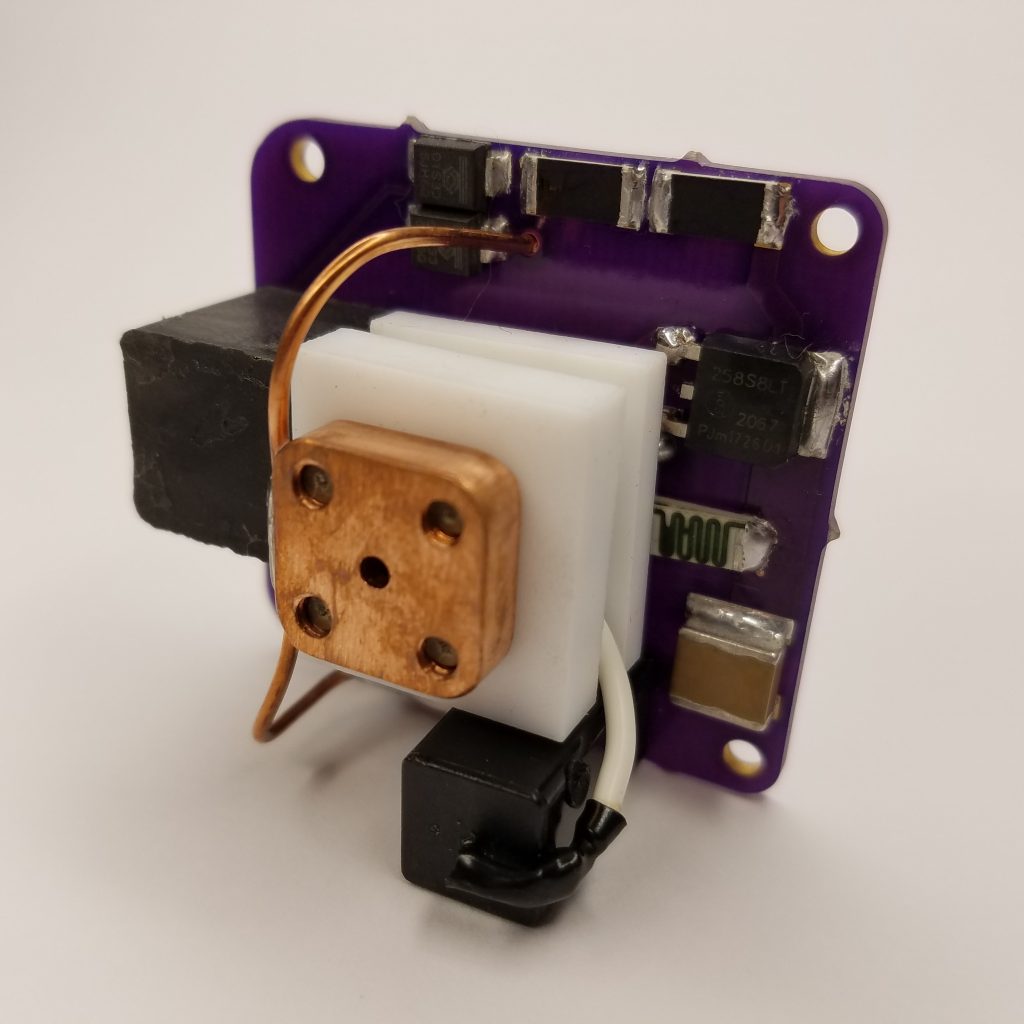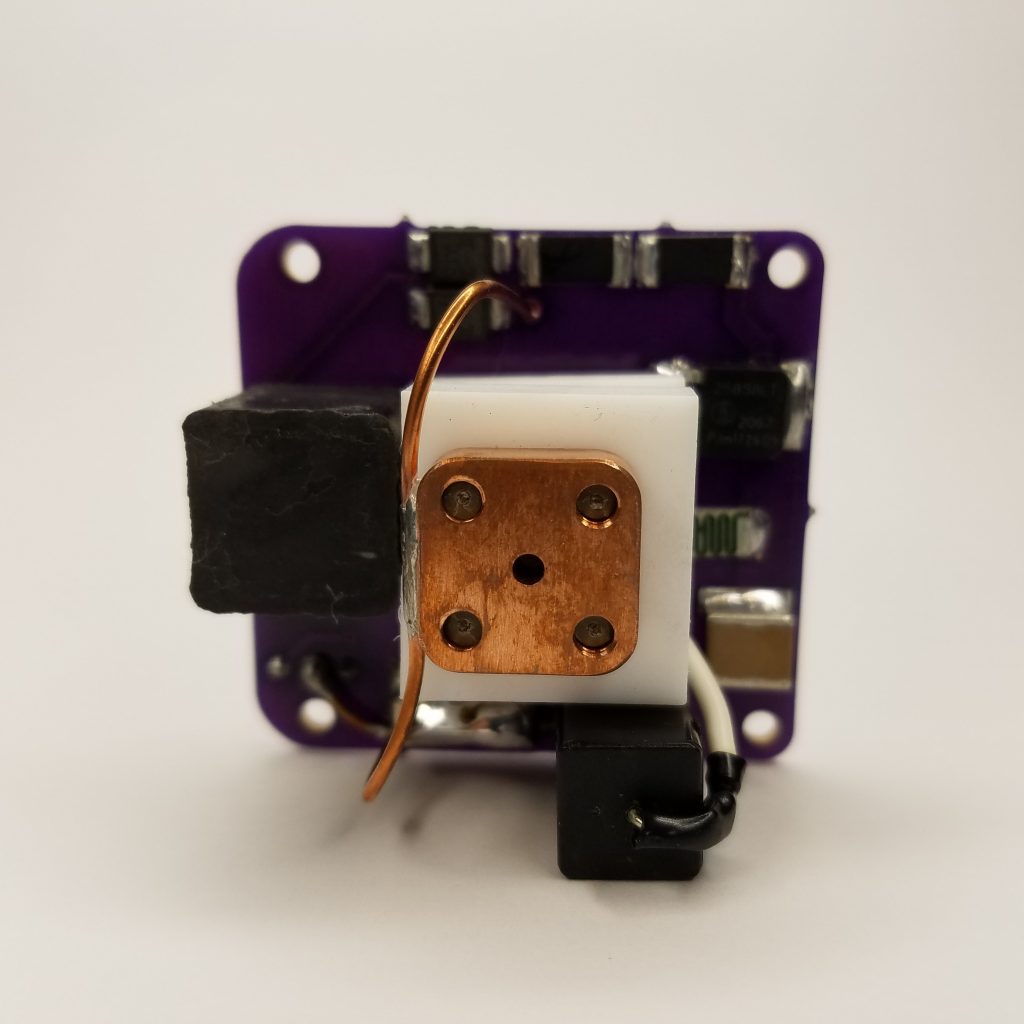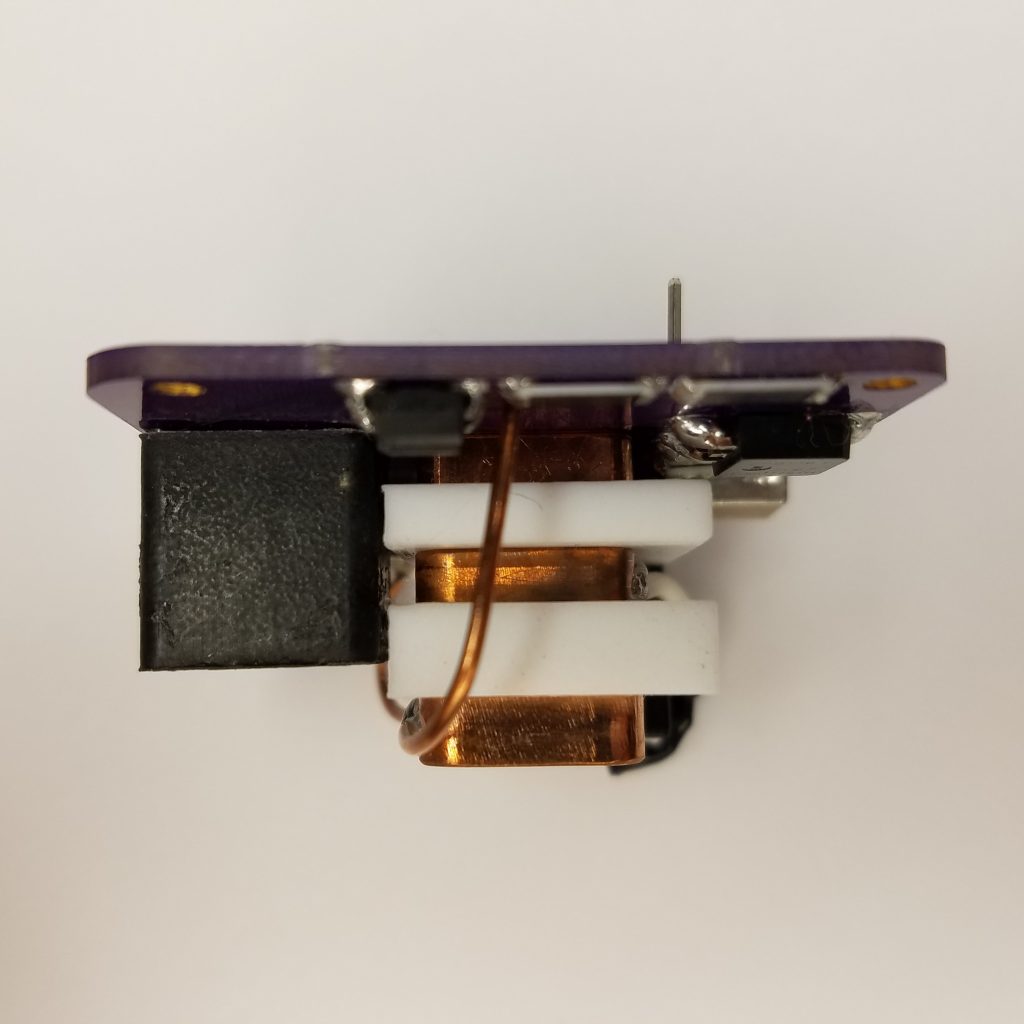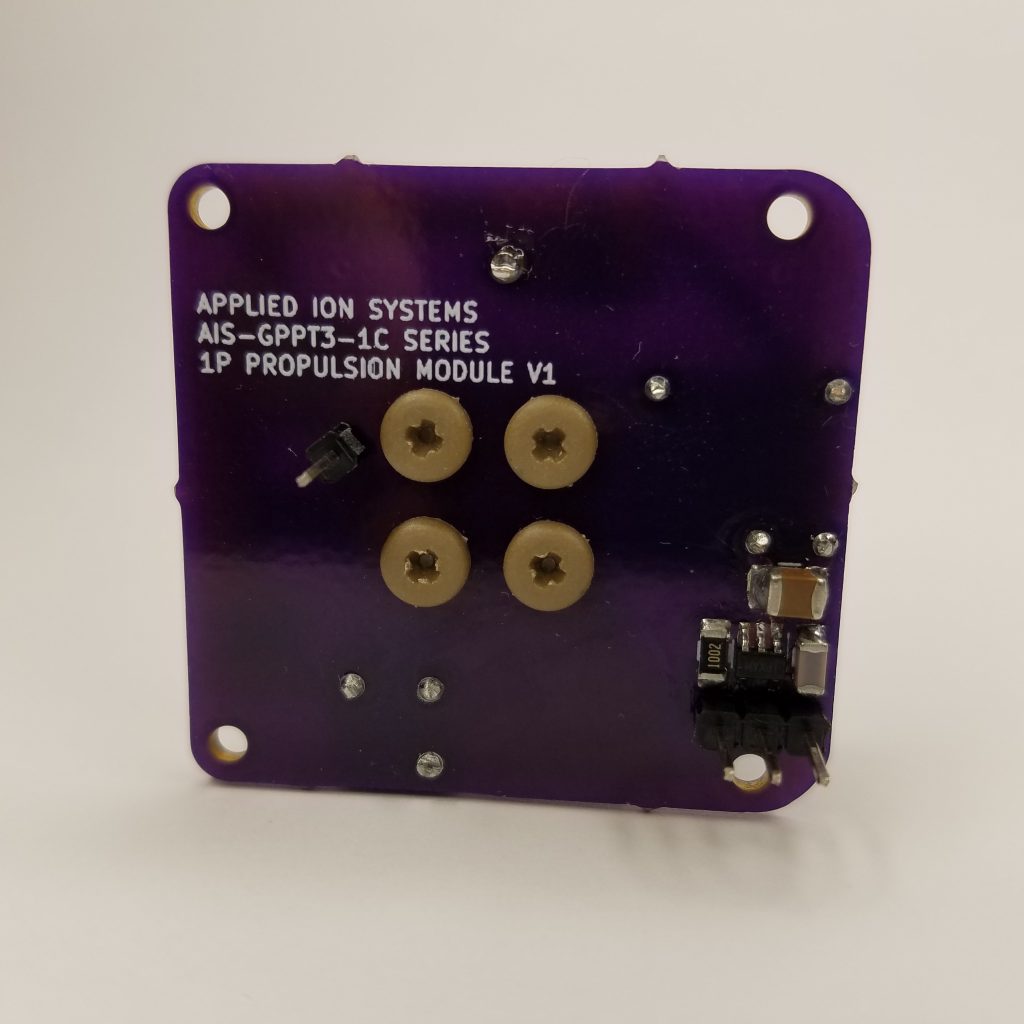Finally, after months of work, numerous iterations, and many successes and failure, I am pleased to announce and reveal the first ever completely integrated propulsion module from Applied Ion Systems: the AIS-gPPT3-1C Integrated Propulsion Module! This module hopefully takes a revolutionary step forward for accessibility of propulsion at the PocketQube-class satellite level, and is, as far as I am aware, the first openly available propulsion solution specifically designed for PocketQubes.

It has been a challenging journey to scale a full propulsion solution into the severe space and power constraints of a PocketQube. Unlike most efforts, which start large, and have more difficulty scaling small, I started with the smallest possible form factor, allowing scaling up to be significantly easier. At only 40mm x 38mm x 24mm, requiring only a half watt max power, and weighing in at only 34 grams, the propulsion module represents a major step forward for PPT miniaturization. In addition, the module will explore embedded magnetic nozzles and new fuels to optimize the ultra-low energy electrothermal operation of the thruster.
The module was specifically designed to fit down to 1P PocketQube, with the ability to scale up. At nominal shot energies of only 0.12J, it also may be one of the lowest, if not the lowest energy PPT designed. Currently, there are almost no ongoing efforts for PQ propulsion, and no successful PQ propulsion tested in space to date, making this cutting edge territory!
Despite the major advance and completion of the module, this is only the beginning. Many hours of testing are now needed to qualify ignition reliability, lifetime, impulse bit, and other operational parameters. While I can’t guarantee that V1 will work flawlessly as expected, it is only a matter of when, not if, PQ propulsion will become available and viable, with the AIS-gPPT series thrusters hopefully spearheading these advances.
Full specifications can be found on the module project page, with continuous updates as I complete new testing phases. Once the module has been tested and verified, a final flight module will be produced, and be ready for integration. After the flight module is produced and ready, I will also begin uploading final CAD models, PCB files, BoM, and testing data as I progress. An exciting time for a new and radical push for low-cost, open-source electric propulsion!





